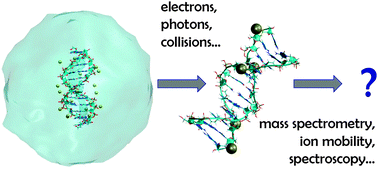Nucleic acid ion structures in the gas phase
Abstract
Nucleic acids are diverse polymeric macromolecules that are essential for all life forms. These biomolecules possess a functional three-dimensional structure under aqueous physiological conditions. Mass spectrometry-based approaches have on the other hand opened the possibility to gain structural information on nucleic acids from gas-phase measurements. To correlate gas-phase structural probing results with solution structures, it is therefore important to grasp the extent to which nucleic acid structures are preserved, or altered, when transferred from the solution to a fully anhydrous environment. We will review here experimental and theoretical approaches available to characterize the structure of nucleic acids in the gas phase (with a focus on oligonucleotides and higher-order structures), and will summarize the structural features of nucleic acids that can be preserved in the gas phase on the experiment time scale.


 Please wait while we load your content...
Please wait while we load your content...